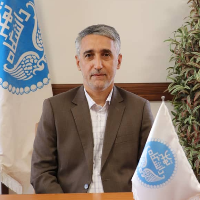Analyzing Effective Factors on Participatory Rural Development Model(Case Study: Hableh River Catchment Area)
Author(s):
Abstract:
One of major challenges of socioeconomic planning (generically) and rural development (typically) in Iran is implementing of participation, as nowadays-rural Iran meets participation crisis. Today it esteems that in the absence of internalizing participation, rural development would be inaccessible. It seemed that it must be provide three preconditions or effective factors for exercising community participation: social, bureaucratic – managerial and structural. Goal of this article is analyzing impacts of the factors on villagers, NGOs, and CBOs’ participatory rural development in Hableh River catchment area. Therefore, it was consider these effective factors on villager's direct participation in rural development plans from villager's viewpoint. UNDP and Iranian Ministry of Agriculture (National Organization for Forest, Range, and Watershed) has performed National Action Plan for Sustainable Management of Soil and Water Resources since 1996. The goals of the project are two: (1) access to a participatory management model of natural resources, and (2) improving life quality of users of natural resources through emphasizing sustainable development. The project contains four subprojects. Experts of the project selected eight villages in Watershed Subproject. Because participatory research must be perform in community level, the case study cannot be large scale, so I consulted experts of the project and selected Lazour and Najafdar villages. Data collecting method is key informant interview, and questionnaires were open-end and semi-structured. Key informants were classified 5 groups: (a) local facilitators, (b) members of Sustainable Development Core (such as local designers and planners) (c) local contractors (d) members of Coordination Council (such as elders) (e) managers of the villages such as "Dehyar" (like mayor in cities) and members of Rural Council. Therefore, all key informants are from these two villages: 12 persons from Lazour and 4 persons from Najafdar concerning their population and proceed of the project. We lived in Lazour one month, recorded men and women's experiences, and observed their participatory projects. Then data collected in MS-Word word processor, accorded with official documents of the project. Data analyzed through content analysis method. This method regards to replicable (objective and systematic) and valid data. According the method, key informant's sentences spread in three designated factors, delivered in a frequency table. Frequency analysis of 1255 sentences of the interviews shows that bureaucratic – managerial factors with frequency of 504, social factors with frequency of 450, and structural factors with frequency of 301 respectively are important. The positive social factors more than other factors help successful socioeconomic rural participation so that local informant's sayings show 272 positive sentences of all 691 positive sentences. The positive bureaucratic – managerial factors with frequency of 248, and the positive structural factors with frequency of 171 put in next order: - Among Social factor: “Leadership and Organization Skills among Villagers”, - among bureaucratic – managerial factors, "Institutionalization and the Formation Popular Organizations and Civil Society to Attract Rural Participation", - and among structural factors, "Flexibility for Transferring Part of Power and Authority to Villagers" have most positive effect on the project. The negative bureaucratic – managerial factors with frequency of 256 sentences more than other factors affect socioeconomic rural participation, then social factors with 178, and structural factors with 130 sentences put in next order: - Among Social factors; “Leadership and Organization Skills among Villagers”, - among bureaucratic – managerial factors; "The Necessary Flexibility for Changing and Dynamic Processes of Participation" and "Process of Allocation of Knowledge and Information Sources to Villagers", - and among structural factors; "Villager's Knowledge than Their Legal Rights and Abilities to Change", have most negative effect on the project, therefore the above-mentioned factors need more attention of internal and external managers and experts for better participatory rural development plans. Results show that concerning social factor of participation, "Leadership and Organization Skills among Villagers" had most effective. Internal managers, experts, and plan designers would declare more flexibility in any participatory action in the village and should resolve all weaknesses that accounted in the research. Planners who want to maximizing effectiveness of participatory projects, should pay attention to one of important factors "Process of Allocation of Knowledge and Information Sources to Villagers" in order to increasing "Villager's Knowledge than Their Legal Rights and Abilities to Change".
Keywords:
Language:
Persian
Published:
Human Geography Research Quarterly, Volume:41 Issue: 69, 2009
Pages:
67 to 86
magiran.com/p685865
دانلود و مطالعه متن این مقاله با یکی از روشهای زیر امکان پذیر است:
اشتراک شخصی
با عضویت و پرداخت آنلاین حق اشتراک یکساله به مبلغ 1,390,000ريال میتوانید 70 عنوان مطلب دانلود کنید!
اشتراک سازمانی
به کتابخانه دانشگاه یا محل کار خود پیشنهاد کنید تا اشتراک سازمانی این پایگاه را برای دسترسی نامحدود همه کاربران به متن مطالب تهیه نمایند!
توجه!
- حق عضویت دریافتی صرف حمایت از نشریات عضو و نگهداری، تکمیل و توسعه مگیران میشود.
- پرداخت حق اشتراک و دانلود مقالات اجازه بازنشر آن در سایر رسانههای چاپی و دیجیتال را به کاربر نمیدهد.
In order to view content subscription is required
Personal subscription
Subscribe magiran.com for 70 € euros via PayPal and download 70 articles during a year.
Organization subscription
Please contact us to subscribe your university or library for unlimited access!




